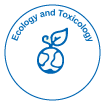Heavy Metal Contamination in Soil: Implications for Plant Biodiversity and Toxicological Risks
Received Date: Dec 30, 2024 / Published Date: Jan 30, 2025
Abstract
Heavy metal contamination in soil is a growing environmental issue that poses significant threats to plant biodiversity and ecosystem stability. Heavy metals such as lead (Pb), cadmium (Cd), mercury (Hg), and arsenic (As) accumulate in the soil due to industrial activities, agricultural practices, and improper waste disposal. These metals exhibit long-term persistence and toxicity, affecting soil microbial communities, plant growth, and food security. This study explores the sources, effects, and potential remediation strategies for heavy metal-contaminated soils, emphasizing the ecological and toxicological risks. By understanding these impacts, policymakers and researchers can implement effective mitigation measures to protect biodiversity and maintain soil health.
Citation: Shenming W (2025) Heavy Metal Contamination in Soil: Implications for Plant Biodiversity and Toxicological Risks. J Ecol Toxicol, 9: 261. Doi: 10.4172/jety.1000261
Copyright: © 2025 Shenming W. This is an open-access article distributed under the terms of the Creative Commons Attribution License, which permits unrestricted use, distribution, and reproduction in any medium, provided the original author and source are credited.
Share This Article
Recommended Journals
Open Access Journals
Article Tools
Article Usage
- Total views: 121
- [From(publication date): 0-0 - Apr 28, 2025]
- Breakdown by view type
- HTML page views: 79
- PDF downloads: 42
